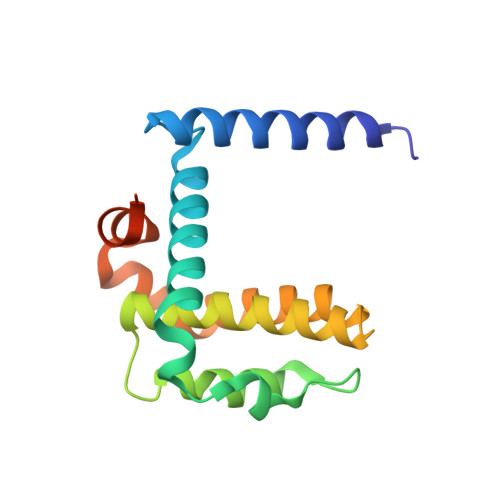Structure-Guided Design of a Selective Bcl-Xl Inhibitor
Lessene, G.L., Czabotar, P.E., Sleebs, B.E., Zobel, K., Lowes, K.L., Adams, J.M., Baell, J.B., Colman, P.M., Deshayes, K., Fairbrother, W.J., Flygare, J.A., Gibbons, P., Kersten, W.J.A., Kulasegaram, S., Moss, R.M., Parisot, J.P., Smith, B.J., Street, I.P., Yang, H., Huang, D.C.S., Watson, K.G.(2013) Nat Chem Biol 9: 390-397
- PubMed: 23603658
- DOI: https://doi.org/10.1038/nchembio.1246
- Primary Citation of Related Structures:
3ZK6, 3ZLN, 3ZLO, 3ZLR - PubMed Abstract:
The prosurvival BCL-2 family protein BCL-X(L) is often overexpressed in solid tumors and renders malignant tumor cells resistant to anticancer therapeutics. Enhancing apoptotic responses by inhibiting BCL-X(L) will most likely have widespread utility in cancer treatment and, instead of inhibiting multiple prosurvival BCL-2 family members, a BCL-X(L)-selective inhibitor would be expected to minimize the toxicity to normal tissues. We describe the use of a high-throughput screen to discover a new series of small molecules targeting BCL-X(L) and their structure-guided development by medicinal chemistry. The optimized compound, WEHI-539 (7), has high affinity (subnanomolar) and selectivity for BCL-X(L) and potently kills cells by selectively antagonizing its prosurvival activity. WEHI-539 will be an invaluable tool for distinguishing the roles of BCL-X(L) from those of its prosurvival relatives, both in normal cells and notably in malignant tumor cells, many of which may prove to rely upon BCL-X(L) for their sustained growth.
Organizational Affiliation:
Chemical Biology Division, Walter and Eliza Hall Institute of Medical Research, Parkville, Victoria, Australia. glessene@wehi.edu.au

















